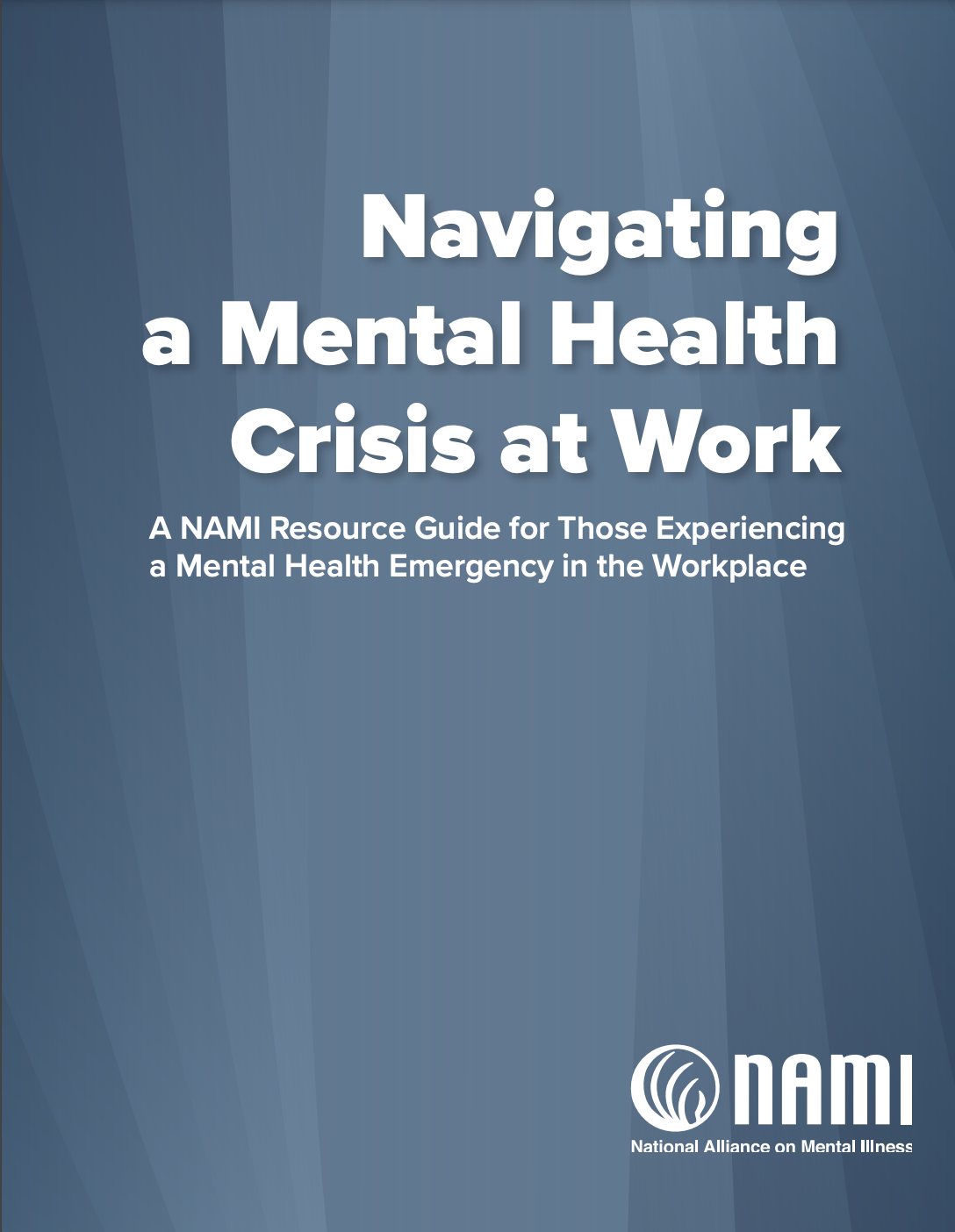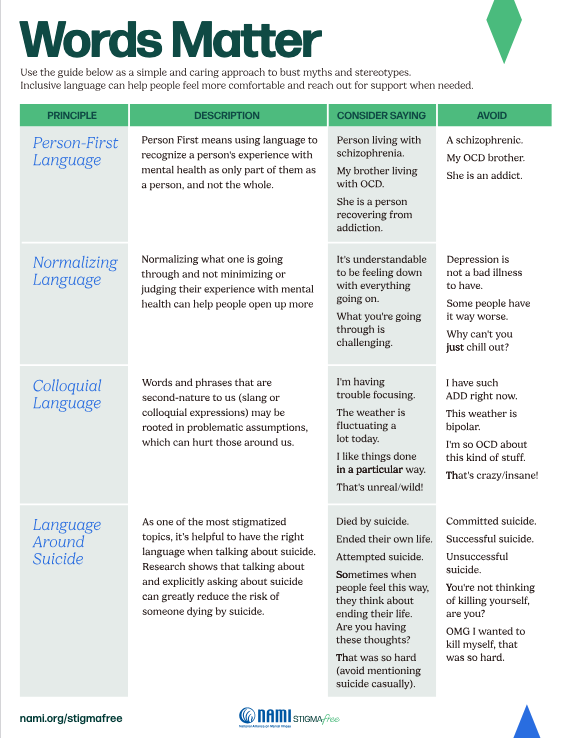Building a trauma-informed workplace
Organizations can do a lot to support employees during traumatic events or challenging times. NAMI encourages people to bring their whole selves to work, which includes their mental health. As employers, it’s important to acknowledge what’s happening outside of the workplace, its potential impact on employee wellness, and support employees so that they can continue to do their best work.
What is trauma?
Trauma occurs when a person is threatened by or directly experiences an intensely distressing event, such as an assault or the sudden death of a loved one. People experience trauma in different ways, even when exposed to the same traumatic event. Experiencing trauma may or may not result in a clinical diagnosis.
Indirect trauma occurs when a person sees or hears about a traumatic event from another person, on the news, or through social media. Frequently, people who work directly with those who have experienced trauma will face indirect trauma, such as journalists, frontline workers, or first responders.
Post-Traumatic Stress (PTS) describes a typical, temporary response to a traumatic or highly stressful event. It includes reactions like feeling on edge, experiencing flashbacks or nightmares, and feeling temporarily disconnected. These experiences can naturally subside over time as individuals process the experience and regain a sense of safety.
Post-Traumatic Stress Disorder (PTSD) is a clinical condition that may develop if a traumatic experience persists for more than a month and significantly interferes with daily life. PTSD is characterized by experiences that are more severe and persistent, including:
- re-experiencing the trauma (through intrusive memories or nightmares)
- avoidance of reminders of the event
- negative changes in mood and thoughts
- chronic physical or emotional pain
- heightened arousal (e.g., being easily startled or having trouble concentrating)
It is important to note, this term can feel stigmatizing to some and should not be used lightly. Learn more about PTSD.
Tips for supporting employee mental health during traumatic events
Recognize the world outside work
Start by openly acknowledging what is happening in the world around us – and that it is likely impacting employee wellness day-to-day. This can be done with an all-staff message from leadership, through town halls, or through other communication channels. Lead with empathy and compassion.
Raise awareness of concerning signs
NAMI provides a wide range of resources about the signs of a mental health concern, which may appear after a traumatic event. How those signs show up at work can differ from person to person, but signs often include changes in how a person feels, looks, acts, or thinks.
- Feels: excessive irritability, worry, or overwhelm
- Looks: confused, exhausted, or fidgety
- Acts: less engaged at work or socially withdrawn
- Thinks: difficulty concentrating or persistent negative thoughts
Everyone’s experience is unique. There is no “right” way to respond to trauma.
How to talk about trauma in the workplace
While bringing up challenging or traumatic topics may seem intimidating for employers, doing so can help everyone feel more supported and heard, strengthening organizational culture.
Creating a psychologically safe space to have these conversations is critical. Organizations can do this by:
- Encouraging non-judgmental language from all levels of employees.
- Creating a statement of support for employees who are struggling, including available internal and external resources.
- Training all employees and people managers about how to have mental health conversations.
- Encourage managers to include a check-in question at the beginning of 1:1 conversations.
- “Before we get started, I wanted to check in to see how you’re feeling with everything going on, and how I might best support you during this time?”
- Avoid minimizing or dismissing a person’s feelings, and use active listening techniques such as validation, giving your full attention, and appropriate body language such as facing the person and keeping screens off and away. Examples of what you can say to validate someone include:
- “It makes sense you feel that way.”
- “I imagine it is difficult to carry this right now, I am here to support you.”
Provide internal and external resources
Make employees aware of available resources, including Employee Assistance Program (EAP) services, crisis hotlines, the NAMI’s HelpLine, community resources, and other sources for employees to learn about and manage trauma.
Additional resources
- 988 the Suicide and Crisis Lifeline: For a mental health or suicidal crisis, call or text 988, or chat online at 988lifeline.org.
- The 988 Lifeline provides 24/7, free and confidential support for people in distress, prevention and crisis resources for you or your loved ones, and best practices for professionals in the United States.
- Press 1 for the Veterans Crisis Line
- Press 2 for Spanish services
- Press 3 for LGBTQI+ support
- The 988 Lifeline provides 24/7, free and confidential support for people in distress, prevention and crisis resources for you or your loved ones, and best practices for professionals in the United States.
- 1-800-985-5990: The Disaster Distress Helpline provides 24-hour, toll-free crisis counseling and support to people experiencing emotional distress related to natural or human-caused disasters. Visit SAMHSA’s Disaster Distress Helpline.
- NAMI HelpLine: Free and confidential source of resources and emotional support for individuals and their loved ones with mental health concerns. Open Monday-Friday 10 am ET – 10 pm ET, call 1-800-950-NAMI (6264), text “HelpLine” to 62640, email [email protected], or chat online at nami.org.
- Find Your Local NAMI: For community resources, support groups, educational classes, and more. Go to nami.org/local.


